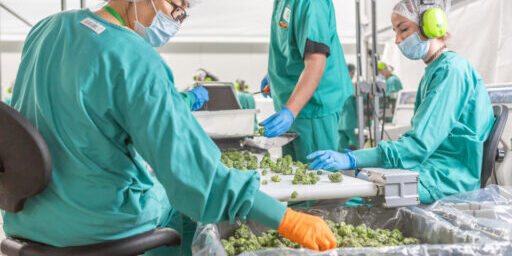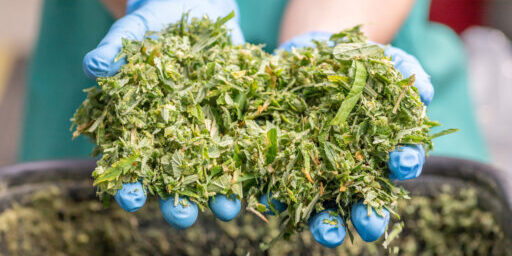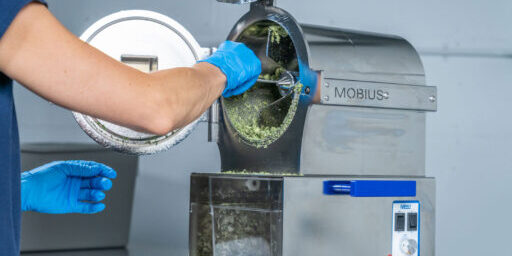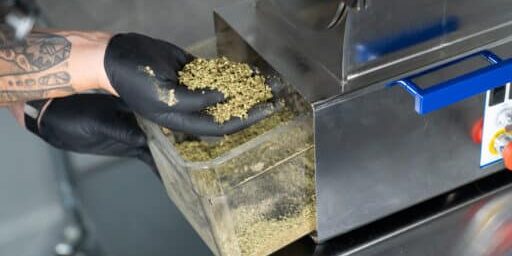Automation in the Cannabis Industry: Why now?
Automation in the cannabis industry was inevitable. While wholesale prices drop in places like Washington, Oregon, and Colorado, automation is now the primary way that cannabis facilities are able to lower the cost of production, ensure product consistency, and maintain QA standards.
When we started developing the Mobius Trimmer M108, the large facilities that are now coming online were still in the beginning stages of build-out. Cannabis growing and harvesting techniques were primarily based on a scaling-up of grey and black market processes. That has now changed, surprisingly quickly. We point to four reasons for this rapid advance in automation.
Better advisors
The initial crop of growers involved in the legal cannabis industry came from the grey and black market. The techniques used in the old grey and black market rarely depended on automation of any kind. It wasn’t necessary. Many of those advisors have evolved and excelled in the new cannabis industry, but as the industry stigma disappears, there is now more facility managers that have backgrounds based in horticulture and agriculture. This new breed of master growers started with bachelors or advanced plant-science degrees, and then adapted their knowledge base to large-scale cannabis growing. It’s the reverse trajectory of those that started with black-market cannabis growing. These new managers are used to and comfortable with automation techniques, understand their importance, and are more likely to recommend them to their COOs. Another way to put it: The knowledge base in the cannabis industry has grown, drastically.
The move from indoor to greenhouse
“A year ago, approximately 50% of the phone calls we received about our automation products were from people building indoor facilities, with 50% building or adapting greenhouses. Now it’s about 80% greenhouse, 20% indoor. If you weight that by processing volume, it’s more like 90% greenhouse,” says Edwin Honderos, Hove CEO. (Hove International is a manufacturer of horticulture automation equipment.)
Scale
A year ago, everybody was talking about bigger and bigger facilities. 300,000 square feet, 400,000 square feet, 1 million square feet. But, at that point, nobody was actually operating facilities at that scale. Most of them were in the planning stages. Now, these large-scale facilities are finally coming online. When another 800,000 square foot facility is announced or completed, industry insiders barely blink an eye, it’s so common. At that scale, it’s simply not possible to operate without high-levels of automation included in the facility, usually designed this way from the start. Moving plants and materials around a 10,000 square foot indoor facility is not a concern. But that changes when you’re talking about a greenhouse that’s so large you can’t see the other side of it. This goes for the harvesting process as well. Hand-trimming is not an option when you consider that these large facilities will be processing 100,000kg per year.
Price competition
Businesses operating these massive facilities are competing on price. Production cost per gram, or claiming to be the “low-cost leader” has become a badge of honor for the largest companies. You can’t compete on price without automation. That’s especially true if your competition is adopting automation tools and techniques: you must as well if you are going to compete on price.
Commoditization and falling prices
We developed a model that’s described in detail in The Harvest Report. The basis of it is this: within 2-3 years after rec legalization, wholesale cannabis prices begin to fall. The more mature markets like Colorado and Washington continue to see historic lows for wholesale cannabis. In Oregon, where outdoor flower prices were spotted at $400/lbs (USD), many cultivators are going out of business. The alternative is to reduce production costs as much as possible, and automation is the solution.
It’s clear that the trend towards as much automation as possible in the cultivation and harvest processes will continue throughout 2019. Aurora’s Sky facility, for example, does not even need humans in the grow rooms. The unprecedented level of automation at Sky is being scaled-up further at Aurora Sun, a facility that will be cultivating 1.2 million square feet of growing space (and will come online Q4 of 2019) (17) Further, elements of automation will become the norm in mid-sized and even small-scale growers as well. People will certainly pay a premium for “craft” cannabis, (as has been proven in the beverage world), but the pricing must still be in the ballpark as the low-cost producers. Automation will allow the small growers to stay within striking range.









